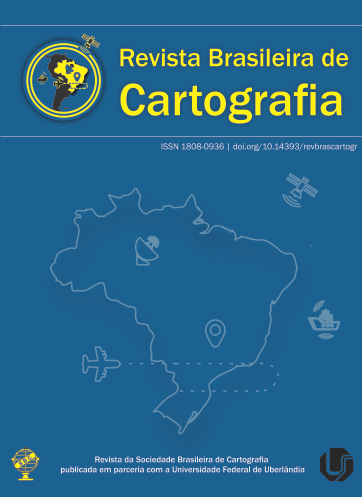Analysis of GNSS PPP multi-constellations using GPS, GLONASS and Galileo systems
Main Article Content
Abstract
Among the systems that make up GNSS, GPS and GLONASS are fully functional. In addition, Galileo and BeiDou are under development, and Galileo has 17 operating satellites. Thus, the purpose of this paper is to investigate the performance of multi-constellation combinations such as GPS, GLONASS and Galileo in some RBMC stations, using the PPP positioning method. For this purpose, the planimetric and altimetric accuracy of four multi-constellation stations were evaluated, belonging to the RBMC, covering the 30 days of April 2018. The data were edited in the GFZRNX freeware in order to obtain files with 60 and 180 minutes tracking intervals, containing only GPS, GPS and GLONASS, GPS and Galileo and the combination of the three systems. Data were processed from Bernese scientific software, version 5.2. The most accurate results in planimetry and altimetry were provided by the traditional GPS/GLONASS integration. Second, the GPS/GLONASS/Galileo combination was promising, showing its interoperability in the PPP positioning method.
Downloads
Metrics
Article Details
Authors who publish in this journal agree to the following terms:
- Authors retain copyright and grant the journal right of first publication with the work simultaneously licensed under a Creative Commons Attribution License that allows others to share the work with an acknowledgment of the work's authorship and initial publication in this journal.
- Authors can enter into separate, additional contractual arrangements for the non-exclusive distribution of the journal's published version of the work (e.g., post it to an institutional repository or publish it in a book), with an acknowledgment of its initial publication in this journal.
- Authors are permitted and encouraged to post their work online (e.g., in institutional repositories or on their website) before and during the submission process, as it can lead to productive exchanges, as well as earlier and greater citation of published work (see "The Effect of Open Access").





